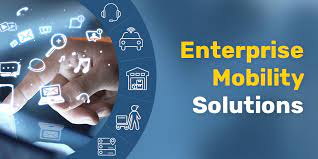In today's rapidly changing business landscape, mobility solution has become a crucial aspect for companies of all sizes. With the advancement of technology and the rise of remote work, mobility solutions have transformed the way businesses operate. But what exactly is a mobility solution?
Put simply, a mobility solution is a set of technologies, applications, and services that allow employees to connect and access company systems and data remotely from any device. These solutions enable businesses to mobilize their workforce, enhance productivity, and gain a competitive edge in the market.
There are various components of a mobility solution, such as mobile devices, mobile applications, cloud computing, and wireless networks, which work together to provide a seamless mobile experience for employees. Let's take a closer look at the elements of a mobility solution and their benefits.
Mobile Devices:
Mobile devices are the primary element of any mobility solution. These include smartphones, tablets, laptops, wearables, and other portable devices that employees use to access work-related information. With the increasing demand for a mobile-optimized workforce, companies are implementing a BYOD (bring your own device) policy, allowing employees to use their personal devices for work purposes. This not only reduces the cost of purchasing devices for employees but also boosts employee satisfaction and increases productivity.
Mobile Applications:
The rise of mobile applications has transformed the way businesses operate. With the help of mobile apps, employees can access critical business tools and data in real-time, regardless of their location. These applications can be custom-built to meet the specific needs of a business or can be off-the-shelf solutions that cater to a wider range of functionalities. Mobile apps not only offer flexibility but also provide a seamless user experience, leading to increased efficiency and productivity.
Cloud Computing:
Cloud computing has been a game-changer for businesses, and its integration with mobility solutions has made it even more powerful. By storing data and applications on remote servers, the cloud enables employees to access information from anywhere, anytime. This eliminates the need for physical infrastructure, reducing costs and providing scalability for businesses. Moreover, cloud-based mobility solutions offer improved data security, allowing companies to keep their data safe and compliant with regulations.
Wireless Networks:
Wireless networks have made it possible for employees to stay connected even when they are on the move. With the advent of 5G technology, businesses can now leverage high-speed wireless networks to provide a seamless and reliable mobile experience to their employees. This enables employees to work from anywhere without experiencing any network connectivity issues.
The benefits of implementing a mobility solution for businesses are numerous. By enabling a mobile workforce, companies can enhance employee productivity, reduce operational costs, and improve customer service. The flexibility and convenience of working remotely also lead to a better work-life balance for employees, increasing their job satisfaction and morale. Moreover, mobility solutions allow businesses to stay competitive by providing agility and adaptability in a fast-paced business environment.
Tags:
Mobility

